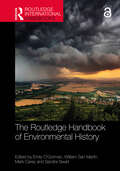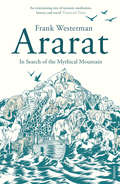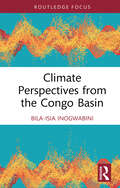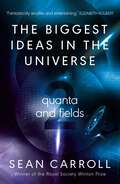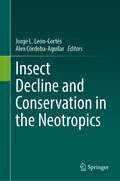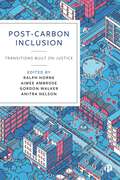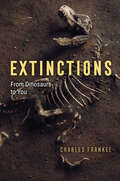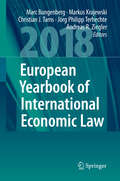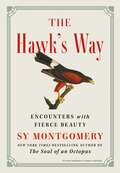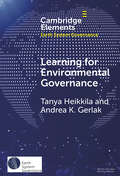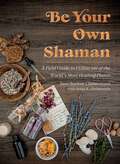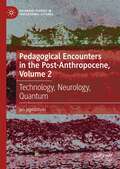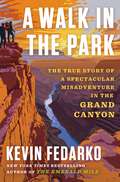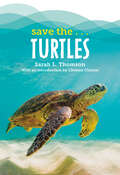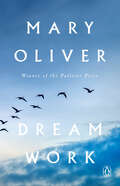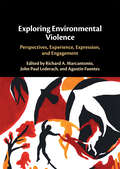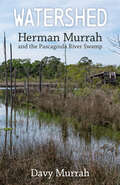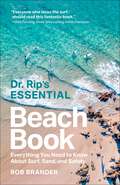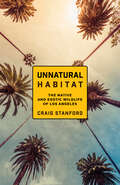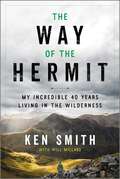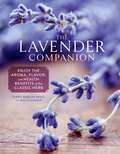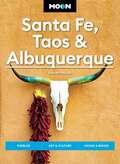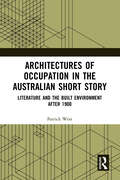- Table View
- List View
The Routledge Handbook of Environmental History (Routledge International Handbooks)
by Mark Carey Sandra Swart Emily O’Gorman William San MartínThe Routledge Handbook of Environmental History presents a cutting-edge overview of the dynamic and ever-expanding field of environmental history. It addresses recent transformations in the field and responses to shifting scholarly, political, and environmental landscapes.The handbook fully and critically engages with recent exciting changes, contextualizes them within longer-term shifts in the field, and charts potential new directions for study. It focuses on five key areas: Theories and concepts related to changing considerations of social justice, including postcolonial, antiracist, and feminist approaches, and the field’s growing emphasis on multiple human voices and agencies. The roles of non-humans and the more-than-human in the telling of environmental histories, from animals and plants to insects as vectors of disease and the influences of water and ice, the changing theoretical approaches and the influence of concepts in related areas such as animal and discard studies. How changes in theories and concepts are shaping methods in environmental history and shifting approaches to traditional sources like archives and oral histories as well as experiments by practitioners with new methods and sources. Responses to a range of current complex problems, such as climate change, and how environmental historians can best help mitigate and resolve these problems. Diverse ways in which environmental historians disseminate their research within and beyond academia, including new modes of research dissemination, teaching, and engagements with stakeholders and the policy arena. This is an important resource for environmental historians, researchers and students in the related fields of political ecology, environmental studies, natural resources management and environmental planning.Chapters 9, 10 and 26 of this book are freely available as a downloadable Open Access PDF at http://www.taylorfrancis.com under a Creative Commons Attribution-Non Commercial-No Derivatives (CC-BY-NC-ND) 4.0 license.
Ararat: In Search of the Mythical Mountain
by Frank WestermanMount Ararat in Turkey is where, as biblical tradition has it, Noah's Ark ran aground and God made his covenant with mankind. Now it stands astride the fault-line between religion and science, a geographical, political and cultural crossroads, bound up with the centuries-old history of warfare between different cultures in this region. Frank Westerman takes a pilgrimage from the mountain's foot to its highest slopes, meeting along the way geologists, priests and an expedition in search of the Ark's remains, as well as a Russian astronaut who observes that 'there is something between heaven and earth about which we humans know nothing'. Ararat is a dazzling, highly personal book about science, religion and all that lies between, by one of Europe's most celebrated young writers.
Climate Perspectives from the Congo Basin (Routledge Focus on Environment and Sustainability)
by Bila-Isia InogwabiniThis book considers the global question of climate change from local perspectives in the context of Central Africa.Bila-Isia Inogwabini examines attempts made by the international community to respond to the global challenges posed by climate change in the Congo Basin and highlights that these attempts have so far produced limited results. Abject poverty and the lack of academic, technical, institutional and governance capacities have made it difficult for these solutions to take root in local conditions. Taking a novel perspective, Inogwabini argues that what is needed is not austerity in the use of natural resources but rather increased material affluence for these communities, which will enable individuals to create their own ways to survive through the tides of climate change. He considers factors including social inertia, climate skepticism and lack of political structure and presents a climate change action plan that is targeted at the local level in the Congo Basin.Overall, this volume will be of great interest to students and scholars of climate change, global development and African studies more broadly.
The Biggest Ideas in the Universe 2: Quanta and Fields
by Sean CarrollTHE NEW YORK TIMES BESTSELLER &‘Neat, and extremely simple: only a deep thinker such as Sean Carroll could introduce the complexity of Einstein&’s general relativity in such a luminous and straightforward manner.&’ Carlo Rovelli, author of Seven Brief Lessons on Physics Immense, strange and infinite, the world of modern physics often feels impenetrable to the undiscerning eye – a jumble of muons, gluons and quarks, impossible to explain without several degrees and a research position at CERN. But it doesn&’t have to be this way! Allow world-renowned theoretical physicist and bestselling author Sean Carroll to guide you through the biggest ideas in the universe. Elegant and simple, Carroll unravels a web of theory to get to the heart of the truths they represent about the world around us. — In Quanta and Fields, the second in this landmark trilogy, Carroll delves into the baffling and beautiful world of quantum mechanics. From Schrödinger to Feynman, Carroll travels through the quantum revolution with the greatest minds of the twentieth century. Exploring how several decades of research overturned centuries of convention, Carroll provides a dazzling tour of the most exciting ideas in modern science.
Insect Decline and Conservation in the Neotropics
by Jorge L. León-Cortés Alex Córdoba-AguilarThis book provides for the first time an integrative analysis of the major drivers of decline and threats of insects and related arthropods in the Neotropical region. Thus, it is an urgent first step towards filling an information gap in this region. It identifies the main causes of decline, provides and discusses examples from the better-studied insect faunas to develop and advance principles and practical conservation management for the rich Neotropical insect faunas. The book is aimed at students, naturalists, environmental managers, and others who have training in entomology/insect ecology and can apply the results of surveys of key insect faunas to assess their vulnerability to environmental change and establish guidelines for their conservation.
Post-Carbon Inclusion: Transitions Built on Justice
by Ralph Horne, Aimee Ambrose, Gordon Walker and Anitra NelsonThis collection pays unique attention to the highly challenging problems of addressing inequality within decarbonisation – particularly under-explored aspects, such as high consumption, degrowth approaches and perverse outcomes. Contributors point out means and possibilities of the transition from high carbon inequalities to post-carbon inclusion. They apply a variety of conceptual and methodological approaches in all-inclusive ways to diverse challenges, such as urban heating and retrofitting. Richly illustrated with case studies from the city to the household, this book critically examines ‘just transitions’ to achieve sustainable societies in the future.
Extinctions: From Dinosaurs to You
by Charles FrankelA compelling answer to an important question: Can past mass extinctions teach us how to avoid future planetary disaster? On its face, the story of mass extinction on Earth is one of unavoidable disaster. Asteroid smashes into planet; goodbye dinosaurs. Planetwide crises seem to be beyond our ability to affect or evade. Extinctions argues that geological history tells an instructive story, one that offers important signs for us to consider. When the asteroid struck, Charles Frankel explains, it set off a wave of cataclysms that wore away at the global ecosystem until it all fell apart. What if there had been a way to slow or even turn back these tides? Frankel believes that the answer to this question holds the key to human survival. Human history, from the massacre of Ice Age megafauna to today’s industrial climate change, has brought the planet through another series of cataclysmic events. But the history of mass extinction together with the latest climate research, Frankel maintains, shows us a way out. If we curb our destructive habits, particularly our drive to kill and consume other species, and work instead to conserve what biodiversity remains, the Earth might yet recover. Rather than await decisive disaster, Frankel argues that we must instead take action to reimagine what it means to be human. As he eloquently explains, geological history reminds us that life is not eternal; we can disappear, or we can become something new and continue our evolutionary adventure.
European Yearbook of International Economic Law 2018 (European Yearbook of International Economic Law #9)
by Markus Krajewski Jörg Philipp Terhechte Marc Bungenberg Andreas R. Ziegler Christian J. TamsVolume 9 of the EYIEL focusses on natural resources law understood as a special area of international economic law. In light of increasing conflicts over access to and the use of natural resources and of their impact on political, social and environmental aspects, the contributions of this volume analyse to which extent international economic law can contribute to the sustainable exploitation, management and distribution of natural resources. The volume collects contributions on general principles of natural resources law, the importance of natural resources for trade, investment and European economic law as well as analyses of particular sectors and areas including fracking, timber, space and deep seabed mining and natural resources in the arctic region.In its section on regional developments, EYIEL 9 addresses two regional integration systems which are usually not at the centre of public interest, but which deserve all the more attention due to their special relations with Europe: The Eurasian Economic Union and the Caribbean Community (CARICOM). Further EYIEL sections address recent WTO and investment case law as well as developments at the IMF. The volume also contains review essays of important recent books in international economic law and other aspects of international law which are connected to international economic relations.The chapter "Sovereignty, Ownership and Consent in Natural Resource Contracts: From Concepts to Practice" by Lorenzo Cotula is open access under a CC BY 4.0 license via link.springer.com.
The Hawk's Way: Encounters with Fierce Beauty
by Sy MontgomeryA splendid and luminous celebration of one of nature&’s most perfect and mysterious creatures—the hawk—from the New York Times bestselling author of the &“astoundingly beautiful&” (NPR) The Soul of an Octopus. When Sy Montgomery went to spend a day at falconer Nancy Cowan&’s farm, home to a dozen magnificent birds of prey, it was the start of a deep love affair. Nancy allowed her to work with Jazz, a feisty, four-year-old, female Harris&’s hawk with a wingspan of more than four feet. Not a pet, Jazz was a fierce predator with talons that could pierce skin and bone and yet, she was willing to work with a human to hunt. From the first moment Jazz swept down from a tree and landed on Sy&’s leather gloved fist, Sy fell under the hawk&’s magnetic spell. Over the next few years, Sy spent more time with these magnificent creatures, getting to know their extraordinary abilities and instincts. They are deeply emotional animals, quick to show anger and frustration, and can hold a grudge for years. But they are also loyal and intensely aware of their surroundings. In this mesmerizing account, featuring sixteen pages of gorgeous color photographs, Sy passionately and vividly reveals the wonderous world of hawks and what they can teach us about nature, life, and love.
Learning for Environmental Governance: Insights for a More Adaptive Future (Elements in Earth System Governance)
by null Andrea K. Gerlak null Tanya HeikkilaLearning is critical for our capacity to govern the environment and adapt proactively to complex and emerging environmental issues. Yet, underlying barriers can challenge our capacity for learning in environmental governance. As a result, we often fail to adequately understand pressing environmental problems or produce innovative and effective solutions. This Element synthesizes insights from extensive academic and applied research on learning around the world to inform both research and practice. We distill the social and structural features of governance to help researchers and practitioners better understand, diagnose, and support learning and more adaptive responses to environmental problems.
Summer's Magic (An Indigenous Celebration of Nature)
by Kaitlin B. CurticeAn Indigenous boy invites new friends to share in beloved traditions as he celebrates the joy of summer and his love for Earth and Creator in this picture book that revels in the warmth, light, and fun of the longest days of the year.Bo, a proud Potawatomi boy, is excited to enjoy long summer days tending his garden, walking his dog, and playing in the river with his big sister, Dani. When he discovers that his family's favorite spot has been polluted with garbage, Bo realizes that caring for Earth is part of what makes summer special. And when he overcomes his shyness and invites others to join in, he discovers that summer's magic has even more surprises in store.&“Bo is short for saying Bodewadmi ndaw, which is &‘I am Potawatomi&’ in our language. Bo is a celebration of Anishinaabe culture, from the way he wears his hair in a traditional braid to the way he shares the magic of summer and honors Earth by caring for her as she cares for us.&”—Kaitlin B. Curtice
Be Your Own Shaman: A Field Guide to Utilize 101 of the World's Most Healing Plants
by Jane Barlow Christensen Brian R. ChristensenSimple Steps to Make Your Plants into Your Own Herbal Apothecary Be Your Own Shaman features 101 plants with healing properties. Each plant&’s information is laid out on two pages and has a full color picture, illustration of the plant, the parts of the plant that are used, the time of day collected, where found, and time of year collected. Many of the plants in this book are found worldwide and many can be cultivated. Most can be found within one hundred feet of your home, and careful observation will help you become familiar with many nearby, useful plants. Be Your Own Shaman is laid out in fourteen sections—divided by ailment since most people look for specific plants for specific health conditions. Most plants will include extra tips for making herbal remedies at home and basically enjoying all the gifts from utilizing plant medicine in your everyday life. The final section gives plant identification tips and basic taxonomy along with preparation methods for tinctures, decoctions, infusions, and poultices.
Pedagogical Encounters in the Post-Anthropocene, Volume 2: Technology, Neurology, Quantum (Palgrave Studies in Educational Futures)
by jan jagodzinskiAs a follow up to Pedagogical Encounters in the Post-Anthropocene, Volume I, this book addresses three major areas in response to the post-Anthropocene: Technology, Neurology, Quantum. Each of these areas is broadly addressed in relation to the concerns that have arisen both theoretically and educationally. As in Volume I, the author terms these to be encounters as each area presents a particular problematic when addressing the phase change that the planet is undergoing where the anthropogenic labour of global humanity is contributing to climate change, endangering our very existence. Technology in education has been a significant development. There is a concerted effort to review this development placing stress on the rise of learning machines and algorithms. In the second encounter the vast literature on neurology is addressed, especially neurodiversity and the various symptoms that have emerged in the post-Anthropocene era. The last section reviews issues related to quantum theory as this is fundamental to tensions between physics and metaphysics. The volume concludes with the author’s own pedagogical proposal for the future.
A Walk in the Park: The True Story of a Spectacular Misadventure in the Grand Canyon
by Kevin FedarkoTwo friends, zero preparation, one dream. From the author of the beloved bestseller The Emerald Mile, a rollicking and poignant account of the epic misadventure of a 750-mile odyssey, on foot, through the heart of America&’s most magnificent national park and the grandest wilderness on earth.A few years after quitting his job to follow an ill-advised dream of becoming a guide on the Colorado River, Kevin Fedarko was approached by his best friend, the National Geographic photographer Pete McBride, with a vision as bold as it was harebrained. Together, they would embark on an end-to-end traverse of the Grand Canyon, a journey that, McBride promised, would be &“a walk in the park.&” Against his better judgment, Fedarko agreed to the scheme, unaware that the small cluster of experts who had completed the crossing billed it as &“the toughest hike in the world.&” The ensuing ordeal, which lasted more than a year, revealed a place that was deeper, richer, and far more complex than anything the two men had imagined—and came within a hair&’s breadth of killing them both. They struggled to make their way through the all but impenetrable reaches of its truest wilderness, a vertical labyrinth of thousand-foot cliffs and crumbling ledges where water is measured out by the teaspoon and every step is fraught with peril—and where, even today, there is still no trail along the length of the country&’s best-known and most iconic park. Along the way, veteran long-distance hikers ushered them into secret pockets, invisible to the millions of tourists gathered on the rim, where only a handful of humans have ever laid eyes. Members of the canyon&’s eleven Native American tribes brought them face-to-face with layers of history that forced them to reconsider myths at the center of our national parks—and exposed them to the impinging threats of commercial tourism. Even Fedarko&’s dying father, who had first pointed him toward the canyon more than forty years earlier but had never set foot there himself, opened him to a new way of seeing the landscape. And always, there was the great gorge itself: austere and unforgiving but suffused with magic, drenched in wonder, and redeemed by its own transcendent beauty. A Walk in the Park is a singular portrait of a sublime place, and a deeply moving plea for the preservation of America&’s greatest natural treasure.
Save the...Turtles (Save the...)
by Sarah L. Thomson Chelsea ClintonTurtles have swum and snapped their ways into kids' hearts. With this book, readers can become turtle experts and learn how to save the animals they love. Featuring an introduction from Chelsea Clinton!Did you know that a turtle named Jonathan is the oldest known living animal on Earth? (He&’s almost two hundred!) How about that the largest sea turtles can dive more than three thousand feet below the water&’s surface? Or that turtles&’ shells have a spine in them, which makes turtles vertebrates—just like humans?Perfect for all animal lovers—and turtle fans in particular—this book is filled with all the facts you need to know to become a turtle expert! Where are turtles found? What&’s it like to be a turtle? Why are turtles endangered, and who has been working hard to save them? Read this book and find out how you can help save the turtles!Complete with black-and-white photographs, a list of fun turtle facts, and things that kids can do right this very moment to help save turtles from extinction, this book, with an introduction by animal advocate Chelsea Clinton, is a must for every family, school, and community library.
Dream Work
by Mary OliverNewly repackaged as a Penguin paperback, an &“astonishing&” book of poetry from the Pulitzer Prize–winning author of American Primitive and &“one of our very best poets&” (New York Times Book Review)Dream Work, a collection of forty-five poems originally published in 1986, follows both chronologically and logically Mary Oliver&’s American Primitive, which won her the Pulitzer Prize for poetry in 1983. The depth and diversity of perceptual awareness, so steadfast and radiant in American Primitive, continues in Dream Work. Additionally, she has turned her attention in these poems to the solitary and difficult labors of the spirit, to accepting the truth about one&’s personal world, and to valuing the triumphs while transcending the failures of human relationships.
Exploring Environmental Violence: Perspectives, Experience, Expression, and Engagement
by Agustín Fuentes John Paul Lederach Richard A. MarcantonioThe contributors to this book represent a wide breadth of scholarly approaches, including law, social and environmental science, engineering, as well as from the arts and humanities. The chapters explore what environmental violence is and does, and the variety of ways in which it affects different communities. The authors draw on empirical data from around the globe, including Ukraine, French Polynesia, Latin America, and the Arctic. The variety of responses to environmental violence by different communities, whether through active resistance or the creative arts, are also discussed, providing the foundation on which to build alternatives to the potentially damaging trajectory on which humans currently find themselves. This book is indispensable for researchers and policymakers in environmental policy and peacebuilding. This title is also available as Open Access on Cambridge Core.
Watershed: Herman Murrah and the Pascagoula River Swamp
by Davy MurrahThe Pascagoula River is the largest unobstructed river in the contiguous United States. Because of this lack of restraint, the river has been left to rise and fall naturally with the seasons, overflowing annually into the adjoining bottomland forest. This phenomenon makes the Pascagoula River one of the wildest rivers, surrounded by some of the most ecologically diverse woodlands, in North America.Herman Murrah (1935–2002) lived his entire life on the banks and in the swamp surrounding this river in southeast Mississippi. Watershed: Herman Murrah and the Pascagoula River Swamp recounts pivotal moments in Herman’s life and in Mississippi’s conservation history more broadly. In this book, Herman’s eldest son, Davy, details the adventures that continue to inspire young conservationists in the fight to protect our remaining natural ecosystems.As a young adult, Herman worked as a game warden in the Pascagoula River Swamp. When the Pascagoula Hardwood Company, then owners of the swamp, decided to sell the vast tract of forest for clearcutting, Herman was incensed. Determined to protect this natural wonder, Herman teamed up with other visionaries to persuade the State of Mississippi to purchase the land and preserve it in perpetuity to the benefit of future generations of humans and wildlife alike. Eventually, the state agreed and finalized the purchase. Herman was appointed area manager for the upper portion of the newly designated Pascagoula River Wildlife Management Area. He dedicated the remainder of his life to preserving, protecting, and improving the swamp for the good of south Mississippi.
Dr. Rip's Essential Beach Book: Everything You Need to Know About Surf, Sand, and Safety
by Rob BranderHow do waves break, and what makes good surf? What are dangerous rip currents, and how do you spot one? What should you do if you get caught in one?Australia’s best-known surf scientist, Rob “Dr. Rip” Brander, takes readers on a fascinating and entertaining journey to uncover how beaches form and behave, the science of waves and currents, and how beaches respond to storms and climate change. He explains where the sand we lay our towels on came from, how the tides that wash up new treasures each day work, why no two beaches are exactly the same, and why some of them are disappearing. He also explores some of the hazards to watch out for, from rip currents to tsunamis to the (unlikely) event you find yourself swimming with a shark.Whether you’re a surfer looking for the perfect wave or you just enjoy hitting the beach with friends and family, this book is a must-read for all ocean lovers.
Unnatural Habitat: The Native and Exotic Wildlife of Los Angeles
by Craig StanfordA guide to the ecosystem famously known as Los Angeles, from a field biologist and longtime San Gabriel Valley resident."A worthy and illuminating entry in the tradition of works exploring urbanization's effect on the environment." —Los Angeles TimesWithin the sprawling metropolis of Los Angeles and its suburbs, residents coexist—often unknowingly—with a bustling mosaic of native and introduced wildlife. Conservationist Craig Stanford, whose research has taken him around the world, now takes a deep dive into the natural history of his Southern California home. Stanford's informed and vivid accounts of more than 150 species entreat us to appreciate the ecological marvels of sagebrush and skunks and skippers, the iconic palms of LA lore, and the mountain lions still roaming the hills.These portraits of the glamorous, humble, irritating, and altogether fascinating species that live alongside Angelenos urge us to recognize that even in a jungle of concrete, we live within nature. Witty and captivating, and combining cutting-edge research with his own critter encounters, Stanford demonstrates the beauty of shaping our cities to support biodiversity, and he warns against the threats that can tip urban ecosystems out of balance, leaving us in a much lonelier world.
The Way of the Hermit: My Incredible 40 Years Living in the Wilderness
by Ken SmithSubconsciously, I pressed myself into the loch's banks as that summer inched forward. We'd got off to a rocky beginning, but I started to see Treig in a different way. There was something about this land that told me just to hold on a while longer. It might've been just a whisper at the time, but I knew it was definitely worth heeding. I just knew that was it. This was the place.Seventy-four-year-old Ken Smith has spent the past four decades in the Scottish Highlands. His home is a log cabin nestled near Loch Treig, known as "the lonely loch," where he lives off the land. He fishes for his supper, chops his own wood and even brews his own tipple. He is, in the truest sense of the word, a hermit.From his working-class origins in Derbyshire, Ken always sensed that there was more ot life than an empty nine to five. Then one day in 1974, an attack from a group of drunken men left him for dead. Determined to change his prospects, Ken quit his job and spent his formative years traveling in the Yukon. It was here, in the vast wilderness of northwestern Canada, that he honed his survival skills and grew closer to nature. Returning to Britain, he continued his nomadic lifestyle, wandering north and living in huts until he finally reached Loch Treig. Ken decided to lay his roots amongst the dense woodland and Highland air, and has lived there ever since.In The Way of the Hermit, Ken shares the remarkable story of his lfe for the very first time. Told with humor and compassion, his unique insights allow us to glimpse the awe and wonder of a life lived in nature and offer wisdom on how each of us can escape the pressures and stresses of modern life.
The Lavender Companion: Enjoy the Aroma, Flavor, and Health Benefits of This Classic Herb
by Jessica Dunham Terry Barlin VesciA celebration of lavender featuring stunning photographs; favorite recipes for the kitchen, pantry, and body care products; along with fascinating lore and gardening guidance from a destination lavender farm. Lavender has long been a favorite herb with its amazing, resinous fragrance; calming qualities; and unique flavor for seasoning food. This lavishly photographed celebration of the beloved herb, written by an acclaimed lavender farmer and cooking instructor, is brimming over with inspiration and ideas for bringing the fragrance and flavor of lavender into daily life. The book profiles the most popular lavender varieties and their recommended uses, along with the history, lore, and traditional medicinal uses. More than 40 recipes showcase lavender in delicious dishes from the kitchen as well homemade craft and body products. Tips for success with lavender in the garden complete this perfect gift for every lavender lover.
Moon Santa Fe, Taos & Albuquerque: Pueblos, Art & Culture, Hiking & Biking (Moon U.S. Travel Guide)
by Steven Horak Moon Travel GuidesExplore the eccentric art installations, historic adobe pueblos, and rugged high desert trails of the Land of Enchantment with Moon Santa Fe, Taos & Albuquerque. Inside you'll find:Flexible itineraries for art-lovers, outdoors enthusiasts, and more, including weekend getaways and a six-day road trip to see all three cities Outdoor adventures: Race down the slopes of Taos Ski Valley or mountain bike through stands of piñon and juniper near Santa Fe. Hike through thick alpine forests, raft the wild rapids of the Rio Grande Gorge, or marvel at the best view in New Mexico from a hot air balloon. Wander around the archeological sites and cave apartments of Bandelier National Monument, spot elk in Valles Caldera National Preserve, or trek alongside ancient rock carvings at Petroglyph National Monument Top experiences and unique activities: Mingle with local artists in the vibrant galleries of Santa Fe, visit Georgia O'Keefe's studio at Ghost Ranch, and relax at a world-class spa. Observe a traditional dance ceremony at a pueblo, admire handmade art and jewelry at the Santa Fe Indian Market, and learn about Native American history at one of the region's many cultural museums. Take a scenic ride on a historic steam-driven train or glide above Albuquerque on the longest aerial tram in the Americas Tastes of the Southwest: Dive into traditional New Mexican dishes drenched in spicy red and green chile sauces or indulge in a juicy green chile cheeseburger. Sip on a sunset margarita at a mellow open-air bar or taste local spirits in a trendy cocktail lounge. Take a culinary tour of Santa Fe's growing food truck scene or explore Albuquerque's lively beer culture Expert insight from Santa Fe local Steven Horak Vibrant full-color photos and detailed maps throughoutHelpful background information on the landscape, wildlife, climate, and local culture With Moon Santa Fe, Taos & Albuquerque's practical tips and local insight, you can experience New Mexico your way. Exploring more of the Southwest? Try Moon Phoenix, Scottsdale & Sedona or Moon Southwest Road Trip. Hitting the parks? Try Moon Grand Canyon or Moon Zion & Bryce.About Moon Travel Guides: Moon was founded in 1973 to empower independent, active, and conscious travel. We prioritize local businesses, outdoor recreation, and traveling strategically and sustainably. Moon Travel Guides are written by local, expert authors with great stories to tell—and they can't wait to share their favorite places with you. For more inspiration, follow @moonguides on social media.
Architectures of Occupation in the Australian Short Story: Literature and the Built Environment after 1900
by Patrick WestPatrick West’s Architectures of Occupation in the Australian Short Story cultivates the potential for literary representations of architectural space to contribute to the development of a contemporary politics of Australian post-colonialism.West argues that the predominance of tropes of place within cultural and critical expressions of Australian post-colonialism should be re-balanced through attention to spatial strategies of anti-colonial power. To elaborate the raw material of such strategies, West develops interdisciplinary close readings of keynote stories within three female-authored, pan-twentieth century, Australian short-story collections: Bush Studies by Barbara Baynton (1902); Kiss on the Lips and Other Stories by Katharine Susannah Prichard (1932); and White Turtle: A Collection of Short Stories by Merlinda Bobis (1999). The capacity of the short-story form to prompt creative and politically germinal engagements with species of space associated with architecture and buildings is underscored. Relatedly, West argues that the recent resurgence of binary thought—on local, national, and international scales—occasions an approach to the short-story collections shaped by binary relationships like a dichotomy of inside and outside. Concluding his argument, West connects the literary and architectural critiques of the story collections to the wicked problem, linked to ongoing colonial violences, of improving Australian Indigenous housing outcomes.Innovative and interdisciplinary, this book will be of interest to scholars and students of Literary, Architectural, and Postcolonial Studies. .
Medicine Wheel for the Planet: A Journey Toward Personal and Ecological Healing
by Jennifer GrenzA personal journey of bringing together Western science and Indigenous ecology to transform our understanding of the human role in healing our planetI used to be an ecologist. . . . Now, I am a community gatherer, working to help bring healing beyond just the land. I am a story-listener. I am a storyteller. I am a shaper of ecosystems. I work on bringing communities together, in circle, to listen to each other. A farm kid at heart, and a Nlaka&’pamux woman of mixed ancestry, Dr. Jennifer Grenz always felt a deep connection to the land. However, after nearly two decades of working as a restoration ecologist in the Pacific Northwest, she became frustrated that despite the best efforts of her colleagues and numerous volunteers, they weren&’t making the meaningful change needed for plant, animal, and human communities to adapt to a warming climate. Restoration ecology is grounded in an idea that we must return the natural world to an untouched, pristine state, placing humans in a godlike role—a notion at odds with Indigenous histories of purposeful, reciprocal interaction with the environment. This disconnect sent Dr. Grenz on a personal journey of joining her head (Western science) and her heart (Indigenous worldview) to find a truer path toward ecological healing. In Medicine Wheel for the Planet, building on sacred stories, field observations, and her own journey, Dr. Grenz invites readers to share in the teachings of the four directions of the medicine wheel: the North, which draws upon the knowledge and wisdom of elders; the East, where we let go of colonial narratives and see with fresh eyes; the South, where we apply new-old worldviews to envision a way forward; and the West, where a relational approach to land reconciliation is realized. Eloquent, inspiring, and disruptive, Medicine Wheel for the Planet circles around an argument that we need more than a singular worldview to protect the planet and make the significant changes we are running out of time for.
